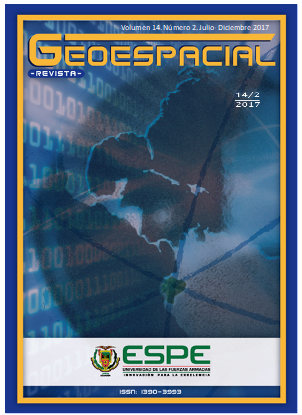CAUDALES ECOLÓGICOS PARA CUENCAS ECUATORIANAS DETERMINADOS POR EL MÉTODO DE LA PENDIENTE DE LA CURVA DE MASAS
Contenido principal del artículo
Resumen
Este estudio presenta los resultados del cálculo de los caudales ecológicos para tres condiciones: base, mantenimiento y máximo de cuencas ecuatorianas que se dispone de datos hidrométricos; a partir de la metodología denominada Mátodo de Pendiente de la Curva de Masa. Para el Ecuador establecer dichos caudales es de vital imporancia para la preservación de los ecositemas naturales, tomando en cuenta que actualmente la inversión en obras hidráulicas como presas, centrales hidroelecticas, obras de contección y otras es muy alta. Los resultados obtenidos permiten establecer una línea base para todos los proyectos, que de alguna manera afectan a los ecosistemas fluviales de las cuencas geográficas del Ecuador, en concordancia con la disponibilidad del agua. Se presenta en forma gráfica los valores de los caudales ecológicos de acuerdo a la ubicación de las estaciones hidrométricas, permitiendo de esta manera apreciar la magnitud de variación espacial de los caudales.
Detalles del artículo
Sección
Artículos Técnicos
Acceso a archivos
Los artículos publicados en la Revista Geoespacial se sujetan a las directrices de OPEN ACCES, en cuanto a la apertura de su contenido hacia todos los visitantes del sitio.
Derechos que conserva el autor:
El autor conserva los derechos morales de publicación
Cesión de derechos a autores:
Se cede los derechos de citas, referencias y temas relacionados con aspectos académicos y de investigación
Cómo citar
CAUDALES ECOLÓGICOS PARA CUENCAS ECUATORIANAS DETERMINADOS POR EL MÉTODO DE LA PENDIENTE DE LA CURVA DE MASAS. (2020). Revista Geoespacial, 14(2), 36-49. https://journal.espe.edu.ec/ojs/index.php/revista-geoespacial/article/view/1601

